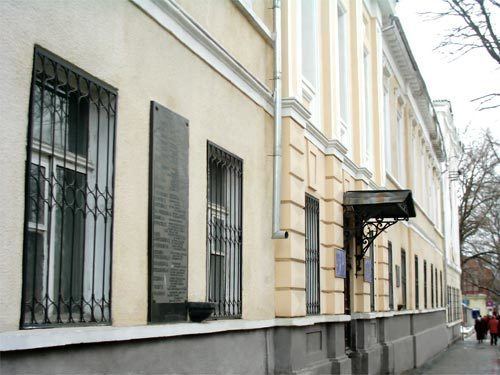School type Public, Gymnasium Principal Igor Kovalyov Enrolment ~1200 | Opened 1812 Grades 1–11 | |
 | ||
Established 1 September 1812 (1812-09-01) | ||
The 1st Gymnasium (Simferopol) or officially Konstantin Ushinsky Gymnasium No.1 of Simferopol municipality Autonomous Republic of Crimea (Ukrainian: Гімназія №1 ім. Ушинського Сімферопольської міської ради Автономної Республіки Крим) located in Simferopol, Crimea, was founded in 1812.
Contents
History
Taurida, later renamed the Simferopol gymnasium for boys, was founded in the autumn of 1812 during the reign of Czar Alexander I. Its opening was dictated by the need for middle school children, who had finished lower school courses, to continue their education and prepare for higher education.
During its first year, under the direction of Fedor Petrovich Zаstavski, only 17 pupils attended the gymnasium. However, by 1835 the number rose to about 477.
Events of the Crimean war (1853–1856) had an influence on the life of the gymnasium, and several unoccupied buildings were used as a hospital.
In 1970, a conference of teachers of Taurida province was held, in which Konstantin Ushinsky took part. In memory of this event the gymnasium has its current name.
In 1991 the school became a gymnasium again. Its curriculum was enriched with such subjects as the history of world art, foreign literature, logics. Beginning in the first form, pupils are required study a foreign language – either English, French, or German; they also study Ukrainian language. From the 5 form a second foreign language is introduced.
A museum was opened in the gymnasium in 1968 and was awarded an exemplary status in 2004.
Currently, the school is situated in two buildings: the old one, that was built in late 1830s, and the new one.
Gymnasium has a so-called first-level school (primary education), general school of secondary level and gymnasium school, which are attended by about 800 pupils (5–11 classes) of its 1187 pupils.
